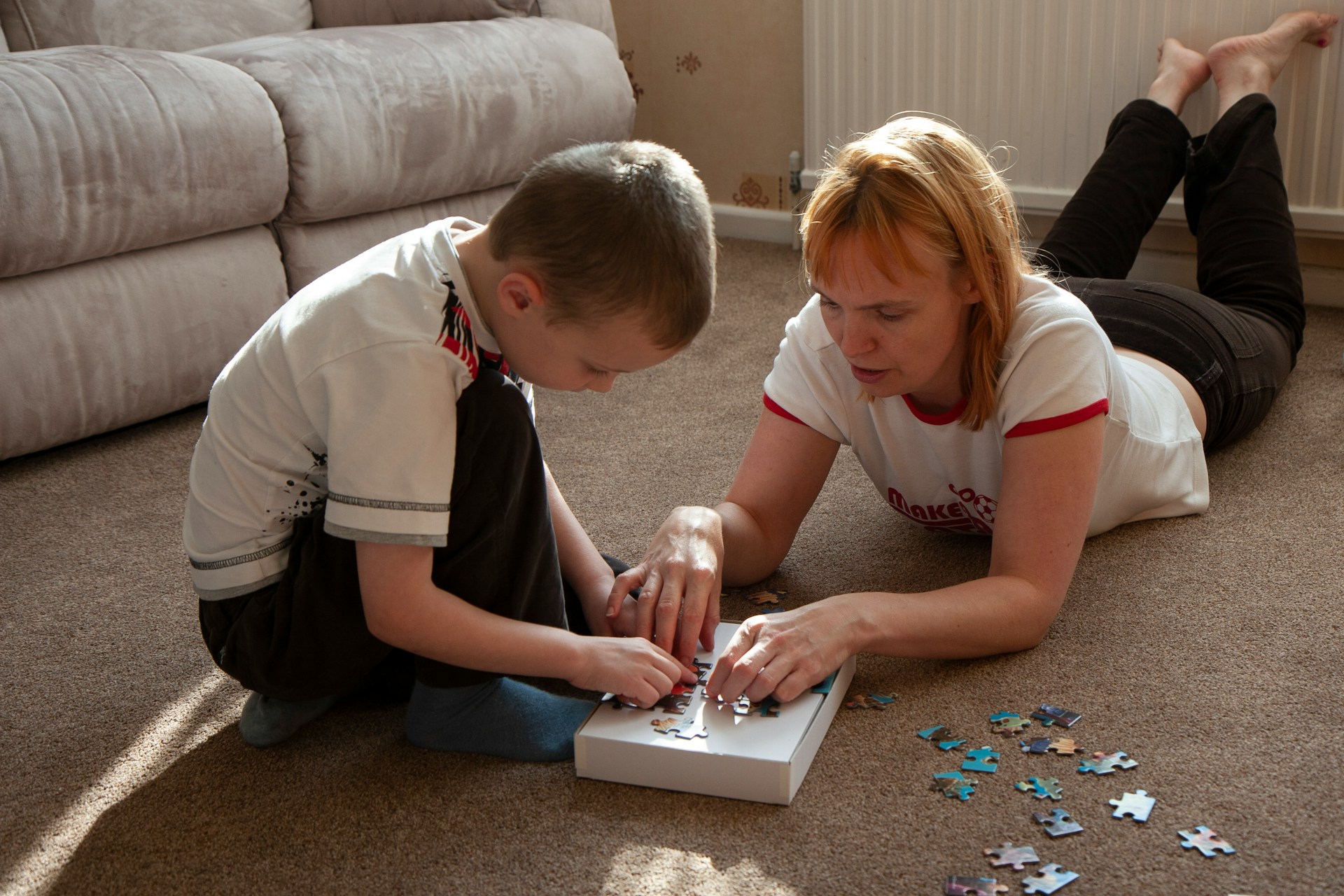
Autism and Testosterone
Deciphering the Hormonal Roots of Autism: The Role of Testosterone
Understanding the Biological Underpinnings of Autism Spectrum Traits
Recent scientific research has increasingly focused on the potential influence of hormones, particularly testosterone, on the development and presentation of autism spectrum disorder (ASD). This exploration stems from the observation that autism is characterized by differences in social interaction, communication, and behavior, which may be linked to neurodevelopmental processes influenced by hormonal activity. This article examines current findings on how testosterone levels—spanning prenatal, postnatal, and adolescent periods—interact with brain development and neurochemical pathways, shedding light on theories such as the 'extreme male brain' hypothesis and sex differences in autism manifestation.
Association Between Testosterone Levels and Autistic Traits

Is there a link between testosterone levels and autism spectrum traits?
Research has shown that there is an association between testosterone levels and autistic traits. Higher levels of testosterone have been found in individuals with ASD compared to those without the condition. Studies measuring amniotic fluid during pregnancy have observed that elevated fetal testosterone correlates with increased autistic traits, such as poorer social skills and reduced imaginative play.
This connection extends into childhood and adolescence. In prepubertal boys, serum testosterone levels have been linked to the severity of autistic traits. Children with higher serum testosterone tend to display more pronounced social difficulties and behavioral traits associated with autism.
Furthermore, meta-analyses indicate that individuals with ASD generally show higher levels of urinary and circulating testosterone, especially during key developmental periods like puberty. These hormonal variations are believed to influence neurodevelopmental pathways related to social cognition.
What do studies indicate about the relationship between testosterone and social behaviors, such as empathy, in relation to autism?
Testosterone, particularly prenatal and early childhood exposure, influences how brain regions develop related to social behaviors such as empathy and social communication. Elevated prenatal testosterone levels are hypothesized to contribute to an 'extreme male brain' phenotype, characterized by heightened systemizing and reduced empathizing.
Children with higher testosterone levels often exhibit challenges in social interaction and emotional recognition. These traits are core components of ASD, and research suggests that hormonal influences may partly underpin these social differences.
In adolescence, fluctuations in testosterone levels during puberty have been associated with the emergence or intensification of autism-related social traits. Importantly, these hormonal effects are mediated through modifications in brain structures responsible for social cognition and emotional processing.
Overall, the evidence underscores testosterone’s significant role in neurodevelopmental pathways that affect social behaviors, linking hormonal profiles to autism spectrum features across different developmental stages.
Prenatal Testosterone and Neurodevelopment

How does prenatal testosterone exposure influence the development of autism and autistic traits?
Research indicates that exposure to testosterone during prenatal development significantly impacts brain structures and behaviors related to social cognition, communication, and overall neurodevelopment. Elevated levels of fetal testosterone, measured in amniotic fluid during the second trimester, have been associated with higher scores on measures of autistic traits in children.
Studies at Cambridge University's Autism Research Centre have shown that fetuses exposed to high testosterone levels tend to develop traits such as poorer social skills and imagination, while maintaining good attention to detail and memory. These traits are often seen across the autism spectrum, suggesting a spectrum effect rather than a direct causation of autism diagnosis.
The 'extreme male brain' theory of autism proposes that higher prenatal testosterone leads to brain masculinization, which influences social and cognitive development pathways. This can result in behaviors characteristic of autism, such as social challenges and repetitive behaviors. While increased fetal testosterone is linked with higher autistic trait scores, it does not directly cause autism but may instead predispose certain neurodevelopmental pathways.
Additionally, research reveals that steroidogenic activity, involving hormones like testosterone and cortisol, is elevated in fetal development among individuals who later show autism-related traits. These hormonal influences likely interact with genetic factors and other environmental influences to shape individual neurodevelopmental trajectories.
In summary, prenatal testosterone influences neurodevelopment by altering brain structure and function, especially those involved in social cognition, supporting the hypothesis that hormonal environment in utero contributes to the spectrum of autistic traits. Despite this, further research is necessary to fully understand the mechanisms and to explore potential interventions or assessments during pregnancy.
Biological Mechanisms Connecting Testosterone to Autism

What are the biological mechanisms linking testosterone to autism, including its impact on brain development and neurochemical factors?
Testosterone plays a significant role in the development of autism spectrum disorder (ASD) through various biological pathways that influence brain structure, function, and neural chemistry. During prenatal development, exposure to high levels of testosterone, especially fetal testosterone circulating in the amniotic fluid, has been linked to the emergence of autistic traits. Elevated prenatal testosterone impacts the organization of brain regions responsible for social cognition, communication, and other core features of ASD.
This hormonal influence affects the formation and wiring of neural circuits, including alterations in neuronal connectivity and synaptic proteins. These structural changes contribute to the characteristic profiles seen in ASD, such as differences in empathy, social skills, and repetitive behaviors. Additionally, increased postnatal testosterone levels observed during adolescence may further modulate neural pathways, potentially exacerbating autistic features.
Testosterone also modulates neurochemical pathways by regulating gene expression related to neural growth, synaptic plasticity, and neurotransmitter systems. It interacts with important neurochemical factors like oxytocin, which is involved in social bonding and stress regulation. Lower oxytocin levels, in conjunction with high testosterone, are associated with social impairments.
Genetic variations affecting androgen receptor sensitivity and enzymes involved in testosterone synthesis and metabolism add complexity to these mechanisms. Variations can alter the intensity of hormonal signaling, influencing individual vulnerability to ASD. Studies show that differences in genes regulating androgen activity may partly explain the variability in autistic traits across individuals.
In summary, testosterone influences autism development through its organizational effects on early brain formation, modulation of neurochemical systems like oxytocin, and genetic variations affecting hormone activity. These combined mechanisms underscore the intricate biological basis connecting hormones with neurodevelopmental outcomes like ASD.
The 'Extreme Male Brain' Hypothesis and Testosterone's Role

What does the 'extreme male brain' hypothesis suggest about the role of testosterone in autism spectrum disorder?
The 'extreme male brain' hypothesis proposes that autism spectrum disorder (ASD) arises from an exaggeration of typical male-typical traits in cognition and behavior. It emphasizes that higher exposure to testosterone, particularly during prenatal development, influences brain growth and organization, pushing it towards a more 'masculinized' profile.
Supporting this idea, research shows that individuals with ASD often display brain structural and functional features aligned with masculine brain patterns. For example, some studies observe that children with autism tend to have more male-typical brain sizes and neural connectivity patterns. These features are associated with core traits of ASD, such as enhanced systemizing skills but reduced empathizing.
A significant body of evidence links maternal or fetal testosterone levels to autistic traits. Elevated fetal testosterone levels, measured via amniotic fluid, have been correlated with higher scores on measures of autistic behaviors, including social difficulties and restricted interests. Such findings reinforce the notion that prenatal hormone environment shapes neural development in ways that predispose to autism.
Further, neuroimaging studies suggest that higher prenatal and postnatal testosterone influences the development of brain regions involved in social cognition and communication. There are also observed gender differences in brain function that are attributable to testosterone's organizational effects during critical development windows.
This hypothesis doesn’t claim that testosterone alone causes autism but highlights its role as a modulating factor. Elevated testosterone interacts with genetic and environmental influences to shape neural architecture and behavior. Though not all findings are conclusive, the cumulative evidence supports a model where hormonal influences, especially testosterone, contribute to the neurodevelopmental pathways associated with ASD.
In summary, the 'extreme male brain' hypothesis links increased prenatal testosterone to the development of brain and behavioral traits characteristic of autism, suggesting that hormonal exposure during early brain formation is a crucial factor in the spectrum of autism presentation.
Gender Differences in Testosterone's Effects on Autism
How do different hormonal trajectories in males and females influence autism?
Testosterone plays a significant role in shaping brain development and physical features, with clear differences observed between males and females. During childhood, females tend to have higher testosterone levels than males before the age of 11, after which testosterone levels in males increase sharply during puberty. This divergence continues into adolescence, affecting not only physical maturation but also neural pathways linked to social and cognitive functions.
In males, higher postnatal testosterone levels have been linked to an increased prevalence of autism spectrum disorder (ASD), supporting the 'extreme male brain' theory of autism, which suggests that elevated prenatal and postnatal testosterone influences the development of autistic traits. Conversely, females generally have lower testosterone levels and are less frequently diagnosed with ASD, possibly due to protective genetic and hormonal factors.
How does prenatal testosterone impact gender-specific development?
Prenatal exposure to high levels of testosterone has been associated with the development of autistic traits, particularly in boys. Elevated fetal testosterone, measured via amniotic fluid during pregnancy, correlates with poorer social skills and imagination but better attention to detail and memory—traits often related to autism.
In girls, higher prenatal testosterone may impact brain organization differently, partly because of interactions with other sex hormones and genetic factors. Interestingly, despite lower prevalence rates, some females with ASD have higher levels of androgen-related hormones, including testosterone, which may influence their neurodevelopment in gender-specific ways.
What is the interplay between genetics and hormones affecting autism presentation?
Genetic variability, especially in androgen receptor sensitivity and enzymes involved in testosterone metabolism, further complicates how hormones influence autism. Males with certain genetic profiles may experience heightened sensitivity to testosterone, increasing autism risk. In females, protective genetic factors may buffer the effects of elevated hormones, requiring additional biological or environmental triggers for ASD features to manifest.
Research indicates that the hormonal environment during critical developmental windows, combined with genetic predispositions, shapes the presentation and severity of autism in a way that is highly gender-specific. Elevated testosterone levels during key periods like pregnancy and puberty influence neural circuits differently in males and females, contributing to distinct behavioral profiles.
| Aspect | Males | Females | Impact on Autism |
|---|---|---|---|
| Prenatal testosterone exposure | Elevated levels linked to autistic traits | Effects less studied; potential for influence | Increased risk for autism traits; differential impact based on gender |
| Postnatal testosterone levels | Rise during puberty; higher in ASD individuals | Higher at younger ages; plateau around 11.5 years | May modulate symptom severity and presentation |
| Genetic factors | Variability in androgen receptor sensitivity | Similarly variable; protective effects possible | Gene-hormone interactions influence autism spectrum features |
| Brain development effects | Influences social brain circuits, cognition | Similar, but with gender-specific organizational effects | Different behavioral and cognitive profiles |
Understanding how testosterone affects males and females differently enhances our knowledge of the biological underpinnings of autism. It underscores the need for gender-specific research and personalized approaches to diagnosis and intervention.
Testosterone and Social Behaviors: Empathy and Beyond
What do studies indicate about the relationship between testosterone and social behaviors, such as empathy, in relation to autism?
Research suggests that testosterone, especially prenatal exposure, plays a significant role in shaping brain structures and functions related to social behaviors like empathy. Higher levels of fetal testosterone have been associated with increased autistic traits, often characterized by difficulties in social reciprocity and reduced empathy.
In children with traits aligned with autism spectrum disorder, studies reveal that lower serum oxytocin—a hormone known for its role in social bonding—is linked with higher autistic features, while testosterone levels tend to be elevated in those with more pronounced autistic traits. This hormonal balance appears to influence social cognition and behavior.
Experimental studies have shown that testosterone can modulate neural responses involved in social cognition, including processes related to social inclusion and exclusion. For example, elevated testosterone levels have been linked to decreased activity in brain regions involved in empathy and emotional recognition.
Structural brain differences influenced by testosterone—particularly in males—may also contribute to variations in social functioning. Brain regions such as the amygdala and prefrontal cortex, which are crucial for empathy and social interaction, can exhibit structural dimorphism related to hormonal exposure.
Overall, the evidence supports a connection between testosterone levels and social behavioral traits. This relationship is especially relevant in understanding the development of autism spectrum disorder, where social impairments are a core feature. Understanding how hormones like testosterone influence social brain networks aids in better comprehending the neurodevelopmental pathways involved in social cognition and ASD.
Hormonal Biomarkers and Autism Spectrum Disorder: A Summary
What does current research reveal about serum hormone levels in children with autism?
Recent studies have shown that hormone levels, particularly testosterone, are linked to autistic traits. Elevated serum testosterone levels have been observed in children diagnosed with ASD compared to neurotypical peers. The research indicates that higher prenatal testosterone exposure may influence brain development related to social and communication skills, fostering traits associated with autism. Additionally, serum levels of androstenedione and oxytocin have been examined, suggesting complex interactions involving sex hormones and social behavior.
How are autistic traits associated with hormones like oxytocin, testosterone, and androstenedione?
Children with more pronounced autistic traits tend to have lower levels of oxytocin and higher levels of testosterone and androstenedione. For instance, those with severe autistic features showed increased serum androstenedione, while those with fewer autistic traits had higher oxytocin, a hormone known for its role in social bonding and emotion regulation. These hormonal differences underscore a potential biological basis for variation in social behaviors and reinforce the view that neuroendocrine factors significantly influence autism spectrum presentations.
What are the implications of hormonal molecule research for autism diagnosis and understanding?
These findings contribute to a broader understanding that autism may involve hormonal dysregulation, particularly during key developmental periods. Elevated fetal testosterone levels have been correlated with autistic traits, supporting the 'extreme male brain' theory of autism. Such hormonal biomarkers could, in the future, assist in earlier identification of autism risks through prenatal testing or serum analysis during childhood.
| Hormone Level | Association with Autism | Notes |
|---|---|---|
| Testosterone | Higher in ASD individuals | Elevated prenatally and during puberty |
| Oxytocin | Lower in children with more autistic features | Important for social bonding |
| Androstenedione | Higher in severe autistic traits | Involved in steroidogenic pathways |
Understanding these hormonal influences enriches our grasp of autism’s biological diversity and paves the way for more targeted research and potentially, interventions.
Hormones and Autism: A Complex Interplay
The accumulating evidence underscores the multifaceted role of testosterone across various developmental stages—from prenatal to adolescence—in shaping traits associated with autism. Elevated prenatal testosterone appears to influence brain structures related to social cognition, supporting the 'extreme male brain' hypothesis. Postnatal and adolescent testosterone fluctuations further modulate neurochemical pathways, affecting behaviors such as empathy and social interaction. Nevertheless, the relationship remains complex, with genetic, hormonal, and environmental factors intertwining to influence autism's presentation. Continued research into hormonal biomarkers and mechanisms promises to deepen understanding and potentially guide future interventions for autism spectrum disorders.
References
- The association between autistic traits and serum testosterone ...
- Testosterone and the Brain: From Cognition to Autism - PMC
- Androgen levels in autism spectrum disorders: a systematic review ...
- Is there an association between prenatal testosterone and autistic ...
- Salivary testosterone in male and female youth with and without ...
- The association between autistic traits and serum testosterone ...
- Elevated rates of testosterone-related disorders in women with ...
- Research links testosterone levels to autistic traits
- Elevated fetal steroidogenic activity in autism | Molecular Psychiatry


Partner with us on your child's journey
Milestone Achievements offers evidence-based ABA therapy to help children with autism reach their full potential. Together we’ll set meaningful goals and celebrate progress every step of the way.
Start ABA Services Today





